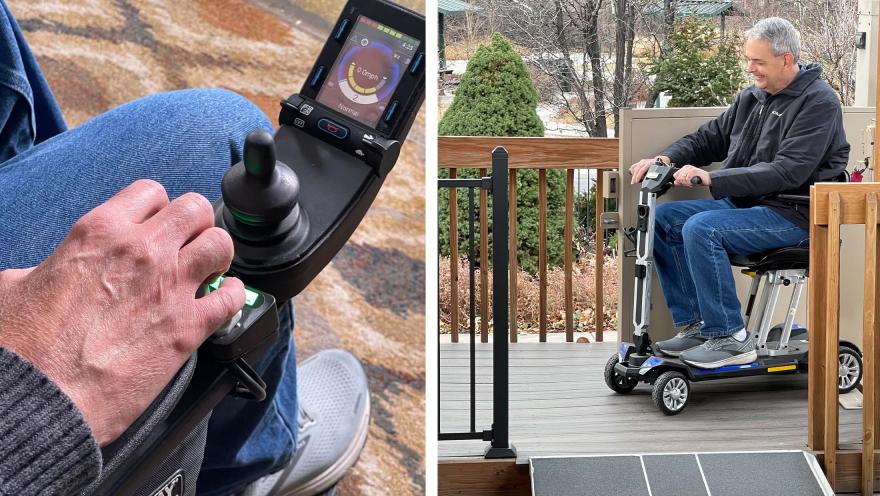This is the first in a four-part series highlighting a new Association video series exploring mobility changes people living with ALS face, created to help initiate discussions between individuals living with the disease, their family members, and their care team, and to assist families with planning and informed decision making.
Decreasing mobility is a challenge faced by every person living with ALS at some point in their disease journey. Finding ways to help people maintain their independence and prevent potential harms caused by everyday living activities is a priority for the ALS community.
To help address the many questions and concerns people living with ALS and their families often have, The ALS Association has developed a new series of educational videos to introduce and explain strategies to help maintain independence and remain safe throughout the progression of the disease.
“We’re excited to launch this new series of videos to help people living with ALS,” said Leslie Ryan, senior director of education and professional competencies at The ALS Association. “Understanding and preparing for changes in mobility after an ALS diagnosis is daunting and yet so important for the families we serve. This video series will help to bridge the information gap, providing an invaluable resource to help prevent harms to people impacted by the disease.”
In the first video, Mark Weston, diagnosed with ALS in 2019, sat down with Shannon Terrell, a doctor of physical therapy at the Kaiser ALS clinic in Colorado, to learn more about what to expect as the disease progresses and the strategies he can implement to help maintain his independence and best quality of life.
Mark began by reflecting on the progression of weakness he was experiencing in his legs. From a minor stumble in 2018, to now needing the aid of a cane to walk 20 yards, he asked Shannon about what he should expect in the future and what he can do to remain as independent as possible for as long as possible. “I believe this will continue to, from the perspective of the disease, progress, from my perspective, digress,” he said. “I'm living in the moment. I can do what I can do. And my belief is that that's what I'll always be able to do. And then it changes.”
Shannon says when it comes to living with ALS, “the only thing that's certain is the uncertainty,” everyone’s journey is inherently different. “Ultimately you're making changes and adapting as those changes happen and you can't decide what they're going to be, and you cannot see into the future to see what they're going to be, but you can make some predictions,” she said. “Trying to stay one step ahead and just knowing, you know, ‘if I'm having a hard time with my standing up from a surface, how can I make that number one, easier, and number two, safer, so that we can prevent a fall?’”
Mark stressed the importance of remaining self-sufficient and independent for as long as possible. “I'm probably not unique in that respect and I often will reject, I hope kindly, but not always, assistance, because I want to be able to do it myself,” he said. “And I don't see that changing even as my ability to be able to do it myself decreases.”
Shannon went on to explain many of the different options now available for people impacted by the disease to help them live longer, stronger, more self-sufficient lives. From lift chairs and grab bars to medical equipment and support services, “it's all about using items to help make what you're doing with your own body better and easier and trying to conserve energy and make it safer.”
Shannon added “this is a quality-of-life thing. And you want to live every minute to the best possible quality. And so, all of these ideas and strategies and pieces of equipment are here to help you have that quality of life and just make things easier and give you more energy back to do the things you want to do.”
Mark concluded the conversation with Shannon saying, “I think those are great tips to help achieve a really important goal, which is living with ALS.”
More in-depth information is listed with each video, and we strongly encourage you to follow up with your local chapter and clinic team for more information. To continue to learn more about ALS and follow stories about people living with the disease in the community, follow our blog at ALS.org/blog.


Comments
My wife, age 66, diagnosed with bulbar onset ALS.
My husband was diagnosed January 2022. He still has his strength but get tired quickly. It’s so hard not knowing how ALS will effect him and how quickly.
Our hearts go out to you and your husband, Diane. Your local ALS Association chapter can provide free information, resources and support. Find their contact information at als.org/chapters.
Join the conversation. Please comment below.